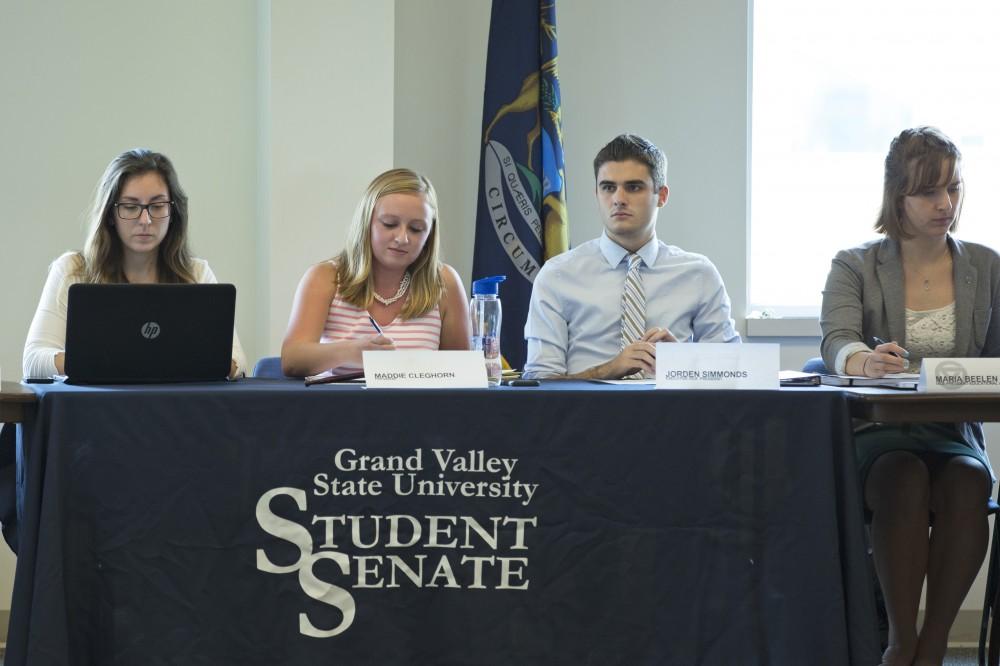Creating an inclusive atmosphere
Sep 28, 2015
Jesse Bernal, vice president for the Division of Inclusion and Equity, and Theresa Rowland, Title IX Coordinator, spoke to the Grand Valley State University student senate on Sept. 24 to address the progress and changes their departments have seen.
Bernal and Rowland are both newcomers to their positions, having held their titles for less than a year.
Bernal focused on the Division of Inclusion and Equity committee’s work to better understand campus climate and student experience.
“When I arrived here six months ago, the president asked me to start a strategic planning process for the Division of Inclusion and Equity which has existed for about eight years,” Bernal said.
GVSU was one of the first universities to create a structure to support inclusion and equity and particularly, inclusion in higher education. Currently, the focus for faculty members, staff, students and graduate students involved with the division is on the newly introduced “framework for inclusion” at GVSU.
“When we started working, there were a lot of different definitions about what work the university should do to advance equity and inclusion and definitions about what diversity even meant or what equity meant or what inclusion mean, so we took a step back from the planning process and looked to create a narrative that is now on the website,” Bernal said.
The framework focuses on the people that make up the university’s campus environment, the experiences they have at GVSU and how to engage with the growing curriculum to develop awareness of identity and diversity.
“We focused on how to create an environment in which you can have healthy and robust experiences and the knowledge that we are here to support students to be themselves within diverse backgrounds and experiences,” Bernal said.
Bernal addressed the fact that each student, faculty and staff member that comes to GVSU has several identities that can either be an advantage or disadvantage on an institutional level. It is the university’s responsibility to be aware of these identities and look at underrepresentation and improvements that are needed.
“We are not only the colors of our skin, we are not only the incomes of our family, we are not only the gender identity or sexual orientation that we are, we are all of those things and we are all of those things at one time,” Bernal said.
Rowland spoke on the increase of student assault disclosures and the updates that have been made on the sexual misconduct policy.
“When I first started talking with student senate in 2012, we had a pretty low amount of student disclosures, maybe a dozen at best and no Title IX investigations at that time,” Rowland said.
The university has worked to update the sexual misconduct policy and has plans to share the policy and plan for prevention and education with the community. They will look for feedback in October or November.
Rowland currently has a team of 12 faculty members from all over campus in housing, advising and other departments serving as trained investigators. Currently, GVSU has 14 recent sexual misconduct occurrences on file, a number much higher than usual.
“This means that students are feeling more comfortable reporting these and going through the process on campus,” Rowland said.
All investigators are charged with being fair, acceptable and fair-minded, meaning that they look at each situation with a 50-50 perspective to determine the evidence and situation at hand, whether it is an instance of sexual misconduct or another form of assault.
The Title IX office and committee is also looking to implement a creative and innovative online training module on the dynamics and definitions on university policy and the informational process.
GVSU has applied for a grant to utilize this online graphic novel-type approach to create a learning technique for those at the university.
“We want to create something using the resources we have at GVSU in different departments to create a module that fits our campus culture and community,” Rowland said.























